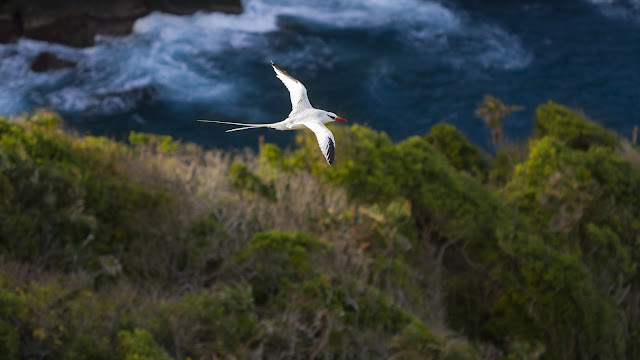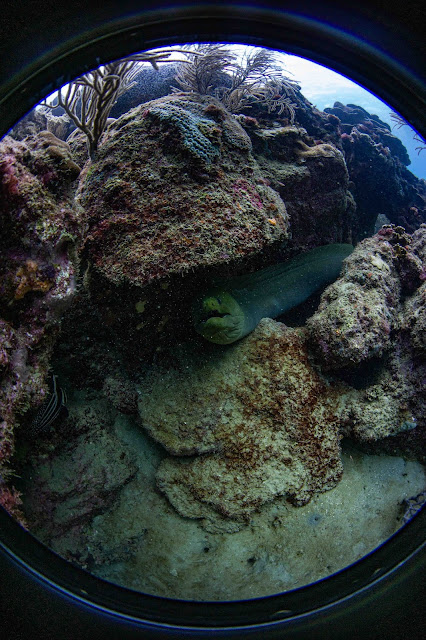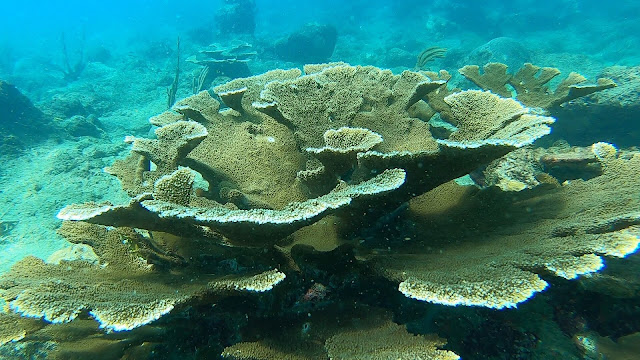Life Lessons on a Tiny Island
Anjani Ganase continues to relate her journey to ocean scientist. She spends eight months on Heron Island and lives among the creatures who feel safe there.
I thought that the island I grew up on was small. Then I moved to a tiny island called Heron Island in the Southern Great Barrier Reef for eight months to study the impacts of climate change on corals. I thought my island upbringing would prepare me for the sea life, but this opportunity to study coral reefs came with a full immersive experience of living in the marine environment.
Heron Island is a two-hour boat ride from the mainland (Gladstone) of Australia and sits in the outer Great Barrier Reef. Heron Island, about 800 m long and 300 m wide, and as the name suggests, houses a colony of herons among other marine birds such as sooty shearwaters and noddy terns. As lovely as this sounds, no one mentioned the eye-watering smell of bird guano or the haunting sounds of hooting shearwaters in the night – the haunting sounds apparently keep sailors away. This tiny island is now shared with humans who spend time at the University of Queensland research station or vacation at the Heron Island Resort. Fun fact, the time zone for the resort is one hour behind the station to cater for the guests travelling from the south.

Heron
Island Reef. Photo by Aaron Chai
Our living on
the island was completely dependent on resources from the mainland, fuel for
electricity and to run the desalination plant for water. Food was brought in
weekly by barge during the summer and every two weeks during the winter. All
orders were made online. All our wastewater was treated before it was released
to the sea and all our garbage returned to the mainland. It was not always this
way as the island used to house a turtle cannery and turtle riding was a
regular pastime of hotel guests. Garbage used to be dumped in the channel to be
taken away by the currents. However, attention to the science along with enforced
management from the government (and the resident park rangers) brought steps in
conservation to make the tiny island into a pristine dream destination for work
and holiday.
THE RESEARCH WORK ROUTINE
I worked for eight months on the island in a lab that experimented on climate change impacts to coral reef systems. Our lab had created mesocosms of reef systems and recreated ocean conditions, temperature and pH, in real time for four scenarios of climate – 100 years before present, present day, a future scenario where we continue to emit carbon dioxide business as usual, and the fourth where we curb our emissions. The mesocosms ran for a year and accounted for day, night, and seasonal cycles. It was no surprise when the mesocosms of future scenarios of climates were essentially reduced to cultures of cyanobacteria and algae while the coral growth in the pre-industrial conditions were more than imagined. I also ran my own experiments on the impacts of temperature on the coral’s ability to effectively shed sediment. Corals with small polyps had a more difficult time shedding sediment under warmer temperatures.
One bonus of this island life, was the intense interactions with visiting scientists from all around the world. Scientists whose research I had only read about in papers, I had the opportunity to put a face to. Most research groups would come for one to two weeks, but my colleague and I – both master’s candidates - lived on the island for months. It was a big contrast from the short stay research studies in which every waking moment is spent working and maximising time. We, on the other hand, had to pace ourselves for the long-haul. This included cutting off at 4 pm, going to our cabin for lunch breaks and even keeping our weekends, when possible. There were many barbecues for leaving groups with left over meat and surprisingly a lot more socialising and assistance with one another’s research.
LIVING IN A PROTECTED
AREA
Heron
Island beach near the harbour. Photo by Anjani Ganase
The real highlight apart from understanding the life of a marine scientist, was the ecosystem itself. I learned to dive in the Caribbean, but until I worked and lived in a fully protected marine area was I truly mind blown by what a healthy reef system should look like. To see the full complement of a marine food web from the crabs, parrotfish to the top predators. To see what schools of rays, barracuda, sharks and grouper look like, instead of the lonely big fish we see on our reefs in Tobago. It was amazing that fishing occurred on the reefs opposite Heron Island, but those reefs also seemed to benefit from the overflow of marine life from the protected areas. We lived on a tiny island but the marine area to explore was endless. I got used to doing laps in the harbour most evenings and encountering eagle rays, reef sharks, loggerhead turtles and Gus the goliath grouper who lived in the jetty and frequented the harbour.
I was not on the menu, there was enough food around, but I also did not press my luck whenever there was a sighting of a Tiger Shark in the area. If the timing was right, we would sit on the jetty at a falling tide in the afternoon to view all the big fish heading back to the deep refuge of nearby channels from the reef flat. These tides were great for hunting as there was limited space for escape. Black tip and lemon sharks going into the channel waited until the last minute before snaking their way over the concrete barrier with their dorsal fins exposed. Marine creatures behaved differently in the protected areas. They did not flee in fear from humans, some were as curious about me as I was about them and were keen to interact. Not the case here in TT, where marine turtles bolt in the opposite direction at the sight of a diver.

Diving
on Heron Island Reef with curious marine life. Photo by Aaron Chai
Another thing I
learned about the tiny island life, was that islands can have coral reefs and
winter. The water temperatures of Heron Island can drop as low as 19 degrees C
during the Austral winters, while in Tobago the temperatures only go to 25
degrees in some locations. Although it was cold, the waters would become clearer.
Winter also brought the pods of migrating humpback whales past the island. I
braved the cold water and continued to do laps in the harbour knowing that it
would bring me close to the travelling whales that passed there. One afternoon,
I timed it perfectly. In the distance I saw the whale spouts, they were coming
my way. I swam back and forth waiting patiently to see the whales from the
surface of the water. The size of humpback whales is intimidating even from
boat, so much more so in the water, you feel dwarfed and vulnerable. As they
pass the harbour and give a little tail slap, they know they’re being watched.
TOBAGO FOR
PROTECTED STATUS
Heron
Island Research Station deck with tank experiments. Photo by Anjani Ganase
The tiny island is a lesson on the potential benefits of marine protection to research, tourism and the health of the ocean ecosystem. There’s benefit to all creatures, and especially the residents, who become advocates in appreciation of the marine life. I hope that systems can be replicated in areas of the Caribbean, and especially Tobago which is well positioned in a large exclusive zone. The reasons for protection must be clear and delivered by government, citizens and operators to visitors. The rewards are abundant, and returns increase as creatures are attracted and feel safe in protected marine areas.


